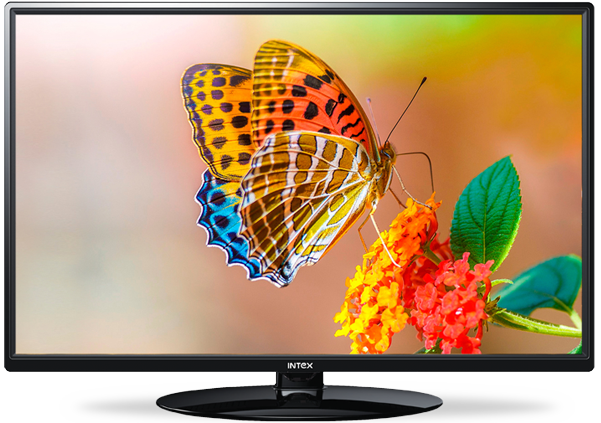A monitor is an essential component of a computer system, acting as the primary output device. It displays visual information, such as text, images, and videos, generated by the computer's internal processes.
Specifications
Primary Function
Display Output: The monitor is responsible for converting the computer’s digital signals into visual output, presenting data in a readable format.
Visual Clarity: The clarity and quality of the image are influenced by factors like resolution, refresh rate, and color accuracy, making the monitor a key element in tasks such as video editing, gaming, and graphic design.
Types of Monitors
LED (Light Emitting Diode): The most common type of modern monitor, offering vibrant colors, energy efficiency, and slim design. LED monitors use backlighting that enhances brightness and contrast, resulting in clearer images.
LCD (Liquid Crystal Display): Previously the standard, LCD monitors offer good quality at affordable prices, but they use fluorescent backlighting instead of LED, leading to less efficient power consumption.
OLED (Organic Light Emitting Diode): Provides superior color accuracy, deep blacks, and faster response times, ideal for high-end gaming or professional photography. OLED monitors are thinner, with individual pixels emitting their own light, enhancing contrast.
Curved Monitors: These monitors are designed to provide a more immersive viewing experience by slightly curving the screen to match the natural curve of the human eye, making them ideal for gaming and multitasking.
Display Size and Aspect Ratio
Size: Monitors come in a wide range of sizes, typically measured diagonally in inches. Common sizes include 21 to 27 inches for general use, while larger screens (up to 49 inches) are popular for gaming, graphic design, and multi-monitor setups.
Aspect Ratio: The aspect ratio determines the proportional relationship between the screen’s width and height. Common aspect ratios include 16:9 (standard for most monitors) and 21:9 (ultra-wide), offering greater screen space for multitasking and immersive viewing.
Resolution
HD (1280x720): The most basic resolution, suitable for casual viewing and general computing.
Full HD (1920x1080): The most common resolution, offering clear and sharp visuals for everyday tasks, such as web browsing, office work, and watching videos.
Quad HD (2560x1440): A higher resolution often found in mid-range monitors, offering more screen real estate and sharper images, ideal for gaming, video editing, and multitasking.
4K UHD (3840x2160): Offers extremely sharp visuals with four times the pixel count of Full HD, providing incredible detail for tasks like photo editing, professional video production, and high-end gaming.
8K UHD (7680x4320): The cutting-edge resolution, offering the highest level of clarity, but still rare and typically used for specialized tasks like medical imaging or advanced content creation.
Refresh Rate and Response Time
Refresh Rate: This refers to how often the monitor refreshes the image per second, measured in Hertz (Hz). Higher refresh rates (such as 144Hz or 240Hz) are crucial for gaming and high-speed action, providing smoother motion and reducing screen tearing.
Response Time: Measured in milliseconds (ms), this indicates how quickly a pixel can change from one color to another. Low response times (1ms to 5ms) are essential for fast-paced gaming and reducing motion blur.
Color Accuracy and Gamut
Color Accuracy: A critical feature for graphic designers, photographers, and video editors. Monitors with good color accuracy ensure that what is displayed on the screen closely matches the colors in real life or the original media.
Color Gamut: The range of colors a monitor can display. Monitors with a wide color gamut, such as Adobe RGB or DCI-P3, are ideal for professionals who need precise color representation.
Connectivity Options
HDMI: The most common connection for modern monitors, supporting high-definition video and audio. HDMI ports are available in different versions, such as HDMI 1.4 and HDMI 2.0, with newer versions offering higher refresh rates and 4K resolution support.
DisplayPort: A popular connection for gaming and high-performance monitors, offering higher bandwidth and support for higher resolutions and refresh rates.
USB-C: Many newer monitors offer USB-C connectivity, enabling fast data transfer, video output, and power delivery all through a single cable.
VGA: An older connector that is still found on some legacy systems but is being replaced by more modern options like HDMI and DisplayPort.
Additional Features
Built-in Speakers: Some monitors come with integrated speakers, providing an all-in-one solution for users who don't want to set up external speakers. However, they often don't match the sound quality of dedicated audio equipment.
VESA Mount Compatibility: Many monitors are compatible with VESA mounts, allowing users to mount their monitors on the wall or use adjustable stands for improved ergonomics.
Blue Light Filtering: Some monitors feature blue light reduction technology, which reduces eye strain during prolonged use, especially useful for late-night work or gaming sessions.
Ergonomics and Design
Adjustable Stands: Monitors often come with stands that allow for height adjustment, tilt, and swivel to help users achieve a comfortable viewing angle and prevent neck or back strain.
Slim Design: Many modern monitors have a thin bezel and sleek profile, offering a minimalist look while providing more screen space in a compact form factor.
Key Considerations
Purpose: Choose a monitor based on your primary use case. For general work, a Full HD monitor is sufficient, while professionals and gamers may benefit from higher resolutions, faster refresh rates, and better color accuracy.
Room Setup: Ensure the monitor size and resolution match your desk space and ergonomic needs.
Budget: Monitor prices vary widely, with basic models being affordable and high-end options requiring a larger investment for features like 4K resolution, high refresh rates, and advanced color accuracy.
